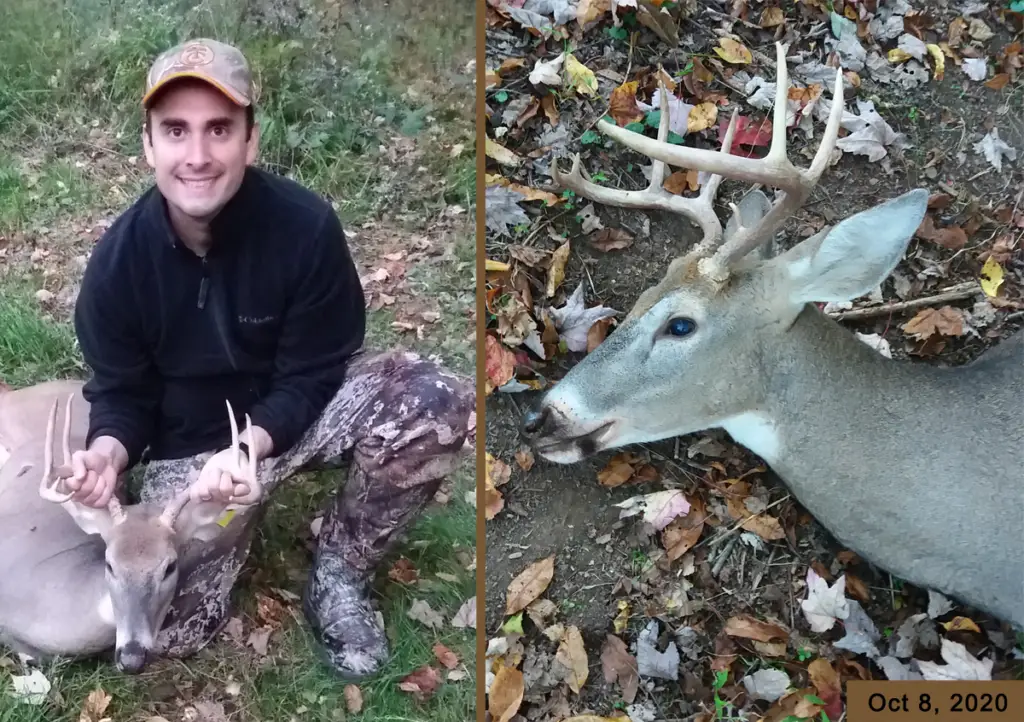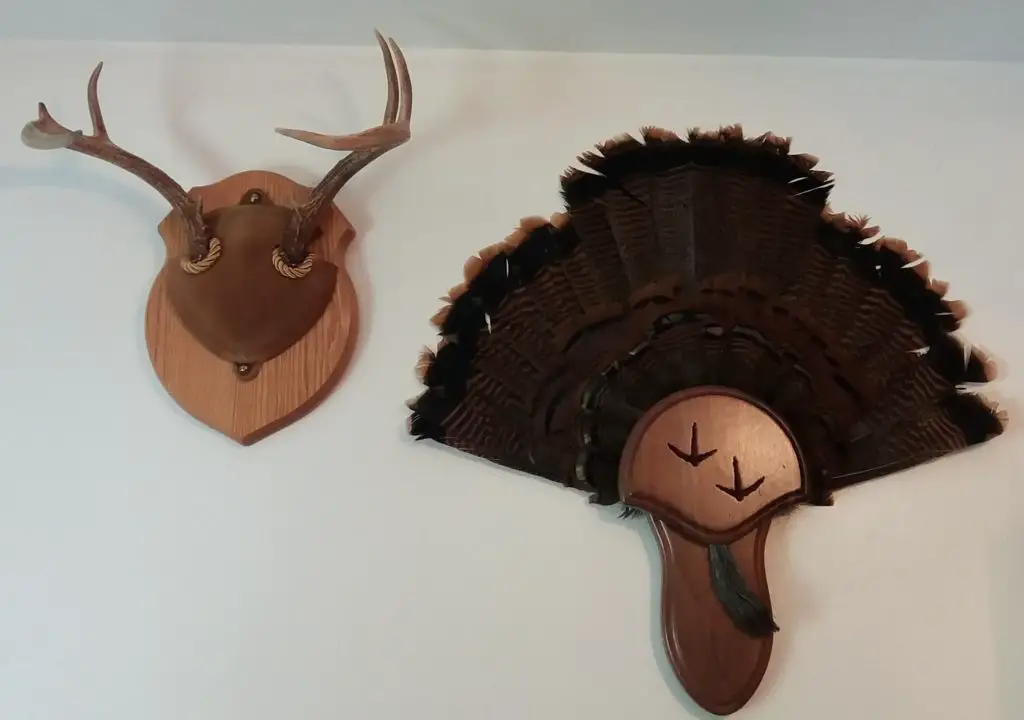Show Notes:
Many people discount the early season when it comes to hunting whitetail deer, but that can be a big mistake. On this episode I talk about the 5 big strategies that helped me land my early season buck and how you can find great success long before the rut draws close.

The Story
So I took the largest buck I’ve harvested so far. Thanks be to God! This deer was part of a two year long journey on the small property I am blessed to be able to hunt.
I spent dozens of days cutting trails, installing habitat improvements, planting 1/10th of an acre of clover with no more equipment than a weed wacker, and setting up stands and trail cameras to hunt and monitor the most likely locations for deer movement.
I spent even more time learning, studying, planning, plotting, and just thinking about the above journey. Before this year I had never seen or had a trail camera photo of a buck on this property during the hunting season. That is 5 straight years with not a single buck sighting or photo during the season!
This year I had identified and named somewhere around 6 bucks that were legal, some much larger than this one, and they are around fairly regularly. I’ve had over 500% more trail camera images of deer this year vs last year, from the same camera, in the same spot, over the same dates (and counting!)
It has been a great adventure in learning about deer, deer habitat, how to create predictable deer movement patterns, how to attract and hold more deer with minimal dollar investment, and of course how to hunt deer more effectively.
More important than all of that, it has been fun! And today I was able to reap some of the fruit of all that work.
The hunt today was simple. I got to the blind around 3:45pm. Watched some fawns graze and run away, and then sat uneventfully for two more hours. At 5:45 I saw a head with antlers appear straight ahead of me, slowly exiting the woods into the clover patch 30 yards away. Within two seconds I know it was a keeper, I drew my bow and fired without hesitation, second thought, or even a second look at the antlers. The shot was true. And my adrenaline kicked in fast.
It was my 4th hunt of the season, and the first legal buck that came within range. Though I could have taken many does, (and probably should have.) This deer was actually coming from semi down wind of me, which is not supposed to happen. So I was not watching that part of field as intently as others. I took great precautions to control scent, and they seemed to have made a difference.
It was a great moment. I wish it had been in the morning when I prefer to hunt so I could have savored it longer without wrestling with the fleeting daylight. But the bucks have been moving here almost exclusively in the evening during this part of the season, so I had to adapt my style some. That is another thing I learned, and it payed off.
I am so thankful to everyone who has had a part in helping me along in my hunting adventures, big or small, such as my family, friends, and coworkers. I especially want to thank my in-laws who have given me great latitude to work on their property with the intention of improving the hunting conditions. Not even I thought my work would have helped this much.
And I am most thankful to God, who set this beautiful creation in order for us to see, experience, and enjoy. He has given me the ability, the health, the strength and the opportunity to do all these things.

